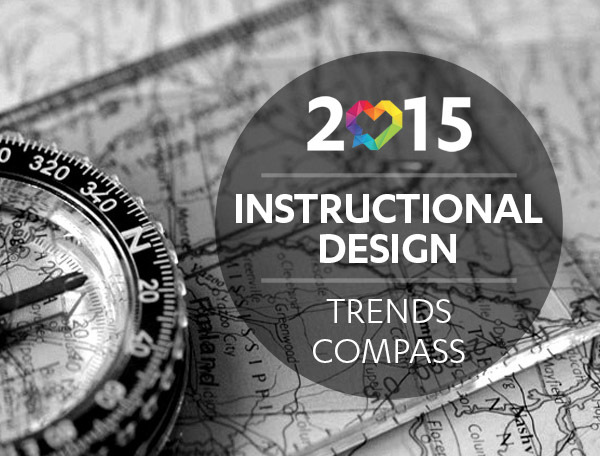Instructional Design Trends That Are Here To Stay
The past several years have witnessed an explosion of interest in design-based development with a number of significant advances in adaptive eLearning approaches. This trend is not surprising, as designers are often at the cutting edge of innovation. It also reflects our increased understanding that learning can be different for every person and that instructional content needs to be tailored to individual learners. This increase in interest has also led to input from various disciplines like psychology, neuroscience, and education.
As a result, design-based development is likely to continue as one of the top trends in instructional design over the next few years. Many companies are going as far to say that it is the future of eLearning. Because of this status, and the fact that regardless, it will continue to become an important area of research and practice, it is important to sift through the various elements and trends in instructional design to determine which ones will stand the test of time.
This article will explore the top three, cutting-edge instructional design trends, so you can create an impactful training program for your employees.

Best Training Methods For Employees
Since the benefits of using eLearning platforms are many, and the use of it is now standard practice, the question still remains: what is the best training method for employees? The answer is simple, and unsurprising: the best training method is the one that works.
This is where instructional design comes into play. It can help make eLearning be engaging, relevant, cost-effective, and create lasting education. There are many aspects of instructional design that are important, but here are three that matter most in creating the best training methods for employees:
- Presentation & Delivery
- Storytelling & Authenticity
- Engagement & Interaction
Let’s review each of these in further detail in order to understand what aspects of instructional design will help create the best training methods for employees.
Presentation Matters More Than Ever
One of the biggest trends we’ve seen is the increased focus on presentation. Instructional designers are moving towards more engaging content with more visuals and videos, which helps learners retain more information and increase interactivity with the course content.
The presentation has been prioritized because it adds a level of engagement that takes online courses from static pages with boring text to engaging lessons that keep learners engaged. After all, a high-quality presentation is key for captivating an audience!
Here are some of the most important things to consider regarding the presentation and delivery of training content:
Mixed Media Content
Mixed media content includes text-based content that is accompanied by graphs, charts, images, and videos to help learners visualize concepts and make connections between various points in the text.
Visual Learners
Not everyone is a visual learner - and that’s important to understand to improve the learning experience - but the vast majority of us are. These learners learn best when information is presented graphically (as opposed to being written out) so as to visually support learning objectives and provide meaning for a concept or idea without requiring a lot of reading or text-based instruction
Immersive Perspectives
Multimedia projects now offer an immersive experience where users can explore through different modalities like geographical, auditory, and 3D. Each of these work together to create an immersive environment where multitasking and interacting with the material is common. For example, users can click on real places, be transported through time or see three-dimensional items rendered in real-time.
Increased Focus on Accessibility
It is important to make all content accessible for all users. This means making your site compatible with screen readers, keyboards only navigation, captions on video clips so hearing-impaired people can follow along too.
Mobile Compatibility
With a rapidly growing number of mobile users accessing online content, instructional designers no longer have the luxury of designing content without considering mobile needs. This means smaller text sizes that are better suited to screen size, plus features like offline reading capabilities and voice-over options so users can still access their content when they don’t have service or Wi-Fi available.
Utilize Storytelling And Authenticity
The use of concise, authentic storytelling has recently grown in popularity because it can help to capture the gist of complex information effectively without falling back on details that many learners may have trouble understanding.
Learning core concepts often allow learners to get 80% of the way there - the 20% is then reserved for more traditional, fact-based approaches.
Stories appeal emotionally by offering up vivid imagery while also providing information that learners understand viscerally, and this provides a significant advantage to simply being told about a place, process, or fact logically without any kind of context or narrative. Connecting them together in a meaningful way through storytelling improves memory consolidation and learning outcomes.
To utilize storytelling in your instructional design, remember to:
- Use visceral images and video, as they can tell a story equally as well as written language
- Incorporate authenticity by using real-life people and examples
- Determine what is important to your audience so you can reach them better
- Don’t be afraid to be vulnerable and open in your personal stories
Authenticity is equally important in instructional design and creating excellent training content. In the past, authentic instruction was once considered to be an insignificant part of a learner's experience. Now, however, it is one of the most prominent topics in instructional design. This is evidenced by the growing popularity of vulnerability, virtual simulations, and modern gamification techniques that leverage real-world concepts like money or currency for rewards.
One way to achieve authenticity is to engage in design thinking. The heart of design thinking is that it provides a framework for continuous improvement that starts from people’s needs and uses empathy, creativity, and prototyping to generate solutions. It is also collaborative and generative in nature. Design thinkers have a habit of asking questions in order to solve problems rather than giving solutions.
To demonstrate how this can work in practice, a company may ask themselves “What do our customers love about our products?” rather than “How can we make our company more profitable?”
Focus On Engagement And Interactivity
Another trend that we’re seeing is a heavy focus on interactivity and engagement. Focusing on engaging and interacting with the audience seems obvious, but it should be reiterated.
After all, an eLearning training curriculum will not be effective if the audience is not engaged in what they are learning. Interactivity and engagement have become so important in instructional design in part because we’re seeing a lot of new educational methods put into place that require frequent interaction between learner and instructor or learner and other learners, such as peer discussions. Here are some ways to increase engagement and productivity:
Gamification
Game mechanics have been integrated into many courses including interactive games where players must follow goals given at each level to continue playing while leveling up. The more chances of obtaining higher scores within a game by achieving various tasks throughout the course of the game—such as word searches, crosswords puzzles, etc.,- the better a learner outcome usually is. The idea here is that anything we can do to engage learners in our courses will make them more likely to stay committed and motivated throughout course completion, improving retention and memory consolidation.
Experiential Learning
This is when an instructional designer builds an immersive experience into their course by adding in graphic organizers and visuals to help learners conceptualize abstract concepts and make connections between real-world items and topics being studied. Experiential instruction takes advantage of sensory receptors like sight, sound, taste, touch, and smell so learners feel like they are truly involved in what they’re doing.
By utilizing these approaches, learners will be more fully engaged in their eLearning. Both learners and instructors will benefit from this and they will be able to bring more creativity into their work, learn difficult topics faster, strengthen mental muscle memory, develop higher-order thinking skills such as problem-solving, process new information, and retain what they learn longer because their brain is more active throughout the course activity.
Creating Impactful eLearning With These Instructional Design Trends
eLearning is the way of the future and has already helped so many companies effectively and efficiently train their employees. However, there are many options to choose from, and building a training program can be challenging and time-consuming. Further, you want to develop the best training method for your employees, and there are cost considerations to be made at every level of organizational planning.
The answer is instructional design. There are many strategies and trends to try out, but the three that will be impactful and stand the test of time are: perfecting presentation and deliver y, using authenticity and storytelling, and focusing on engagement and interactivity. Employ these strategies and see your eLearning outcomes soar!
Download the eBook eLearning 101: How To Create The Perfect Curriculum For Your Company to discover action points you can follow to launch a custom-tailored L&D strategy for your team. It's a must-read for companies that are weighing the pros and cons of outsourcing and want to learn more about curriculum design from industry experts.
Also, join the webinar to learn how to jump-start your eLearning initiatives by collaborating with a third-party provider!









